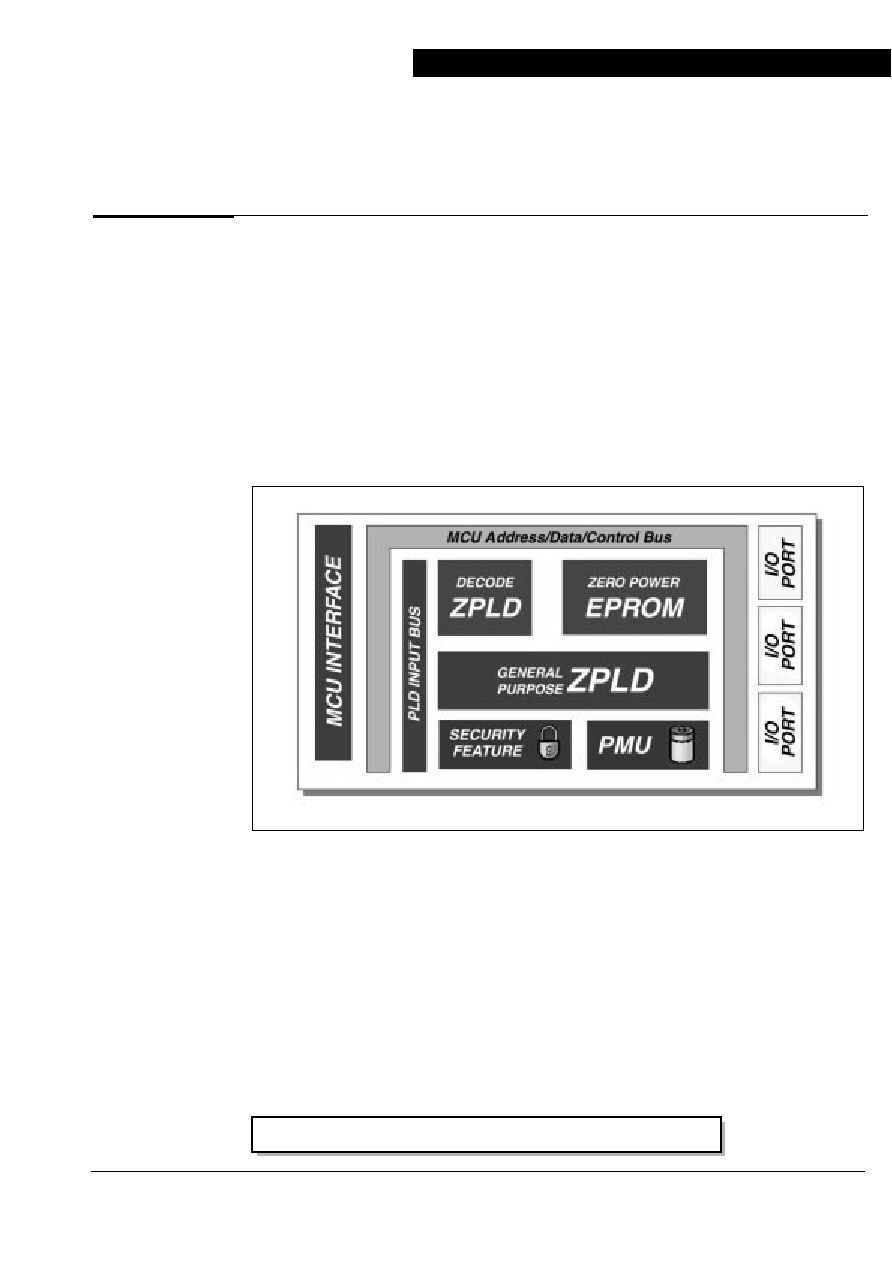
i
PSD211R Family
PSD211R ZPSD211R ZPSD211RV
Low Cost Microcontroller Peripherals
Table of Contents
1
Introduction ...........................................................................................................................................................1
2
Notation ................................................................................................................................................................2
3
Key Features ........................................................................................................................................................4
4
PSD211R Family Feature Summary ....................................................................................................................5
5
Partial Listing of Microcontrollers Supported ........................................................................................................5
6
Applications ..........................................................................................................................................................5
7
ZPSD Background ................................................................................................................................................5
7.1
Integrated Power Management
TM
Operation .............................................................................................6
8
Operating Mode ....................................................................................................................................................9
9
Programmable Address Decoder (PAD)...............................................................................................................9
10
I/O Port Functions ...............................................................................................................................................12
10.1
CSIOPORT Registers..............................................................................................................................12
10.2
Port A (PA0-PA7).....................................................................................................................................12
10.3
Port B (PB0-PB7).....................................................................................................................................14
10.4
Port C (PC0-PC2) ....................................................................................................................................15
11
PSD Memory ......................................................................................................................................................16
11.1
EPROM....................................................................................................................................................16
11.2
Programming and Erasure.......................................................................................................................16
12
Control Signals ...................................................................................................................................................16
12.1
ALE or AS ................................................................................................................................................17
12.2
WR or R/W...............................................................................................................................................17
12.3
RD/E ........................................................................................................................................................17
12.4
PSEN .......................................................................................................................................................17
12.5
A19/CSI ...................................................................................................................................................17
12.6
Reset Input ..............................................................................................................................................18
13
Program/Data Space and the 8031 ....................................................................................................................20
14
Systems Applications..........................................................................................................................................21
15
Security Mode .....................................................................................................................................................23
16
Power Management............................................................................................................................................23
16.1
CSI Input..................................................................................................................................................23
16.2
CMiser Bit ................................................................................................................................................23
16.3
Turbo Bit (ZPSD Only).............................................................................................................................24
16.4
Number of Product Terms in the PAD Logic............................................................................................24
16.5
Composite Frequency of the Input Signals to the PAD Logic..................................................................25
16.6
Loading on I/O Pins .................................................................................................................................26
17
Calculating Power ...............................................................................................................................................27
18
Specifications......................................................................................................................................................30
18.1
Absolute Maximum Ratings .....................................................................................................................30
18.2
Operating RAnge .....................................................................................................................................30
18.3
Recommended Operating Conditions......................................................................................................30
18.4
Pin Capacitance.......................................................................................................................................30
18.5
AC/DC Characteristics ≠ PSD211R/ZPSD211R (All 5 V devices)...........................................................31
18.6
AC/DC Characteristics ≠ PSD211RV (3 V devices only).........................................................................32
18.7
Timing Parameters ≠ PSD211R/ZPSD211R (All 5 V devices) ................................................................33
18.8
Timing Parameters ≠ ZPSD211RV (3 V devices only) ............................................................................34
18.9
Timing Diagrams for PSD211R Parts .....................................................................................................36
18.10 AC Testing ...............................................................................................................................................39

ii
PSD211R Family
PSD211R ZPSD211R ZPSD211RV
Low Cost Microcontroller Peripherals
Table of Contents
(cont.)
19
Pin Assignments .................................................................................................................................................40
20
Package Information ...........................................................................................................................................41
21
Package Drawings ..............................................................................................................................................42
22
PSD211R Ordering Information ..........................................................................................................................45
22.1
Selector Guide .........................................................................................................................................45
22.2
Part Number Construction .......................................................................................................................46
22.3
Ordering Information................................................................................................................................46
23
Data Sheet Revision History ...............................................................................................................................47
Sales Reps .........................................................................................................................................................48

1
1.0
Introduction
Programmable Peripheral
PSD211R
Field-Programmable Microcontroller Peripheral
The low cost PSD211R family integrates high-performance and user-configurable blocks of
EPROM and programmable logic into one part. The PSD211R products also provide a
powerful microcontroller interface that eliminates the need for external "glue logic". The
part's integration, small form factor, low power consumption, and ease of use make it the
ideal part for interfacing to virtually any microcontroller.
The major functional blocks of the PSD211R include:
∑
Two programmable logic arrays
∑
256 Kb of EPROM
∑
Input latches
∑
Programmable I/O ports
∑
Programmable security
The PSD211R family architecture (Figure 1) can efficiently interface with, and enhance,
almost any 8-bit multiplexed microcontroller system. This solution provides microcontrollers
the following:
∑
Chip-select logic, control logic, and latched address signals that are otherwise
implemented discretely
∑
Port expansion (reconstructs lost microcontroller I/O)
∑
An EPROM (with security)
∑
Compatible with 8031-type architectures that use separate Program and Data Space.
Updated March 1, 1999. See page 47.

PSD211R Family
2
2.0
Notation
1.0
Introduction
(Cont.)
The PSD211R I/O ports can be used for:
∑
Standard I/O ports
∑
Programmable chip select outputs
∑
Address inputs
∑
Demultiplexed address outputs.
Implementing your design has never been easier than with PSDsoft--WSI's software
development suite. Using PSDsoft, you can do the following:
∑
Configure your PSD211R to work with virtually any 8-bit microcontroller
∑
Specify what you want implemented in the programmable logic using a high-level
Hardware Description Language (HDL)
∑
Simulate your design
∑
Download your design to the part using a programmer.
Throughout this data sheet, references are made to the PSD211R. In most cases, these
references also cover the ZPSD211R and ZPSD211RV products. Exceptions will be noted.
Also, references to the ZPSD211R will also cover the low-voltage ZPSD211RV. (Again,
exceptions will be noted.) Use the following table to determine what references cover which
product versions:
Reference
PSD211R
ZPSD211R
ZPSD211RV
PSD211R or PSD
X
X
X
PSD211R only
X
Non-ZPSD
X
ZPSD versions only
X
X
Non-V versions
X
X
V versions only or 3 V part only or
ZPSD211RV only
X




